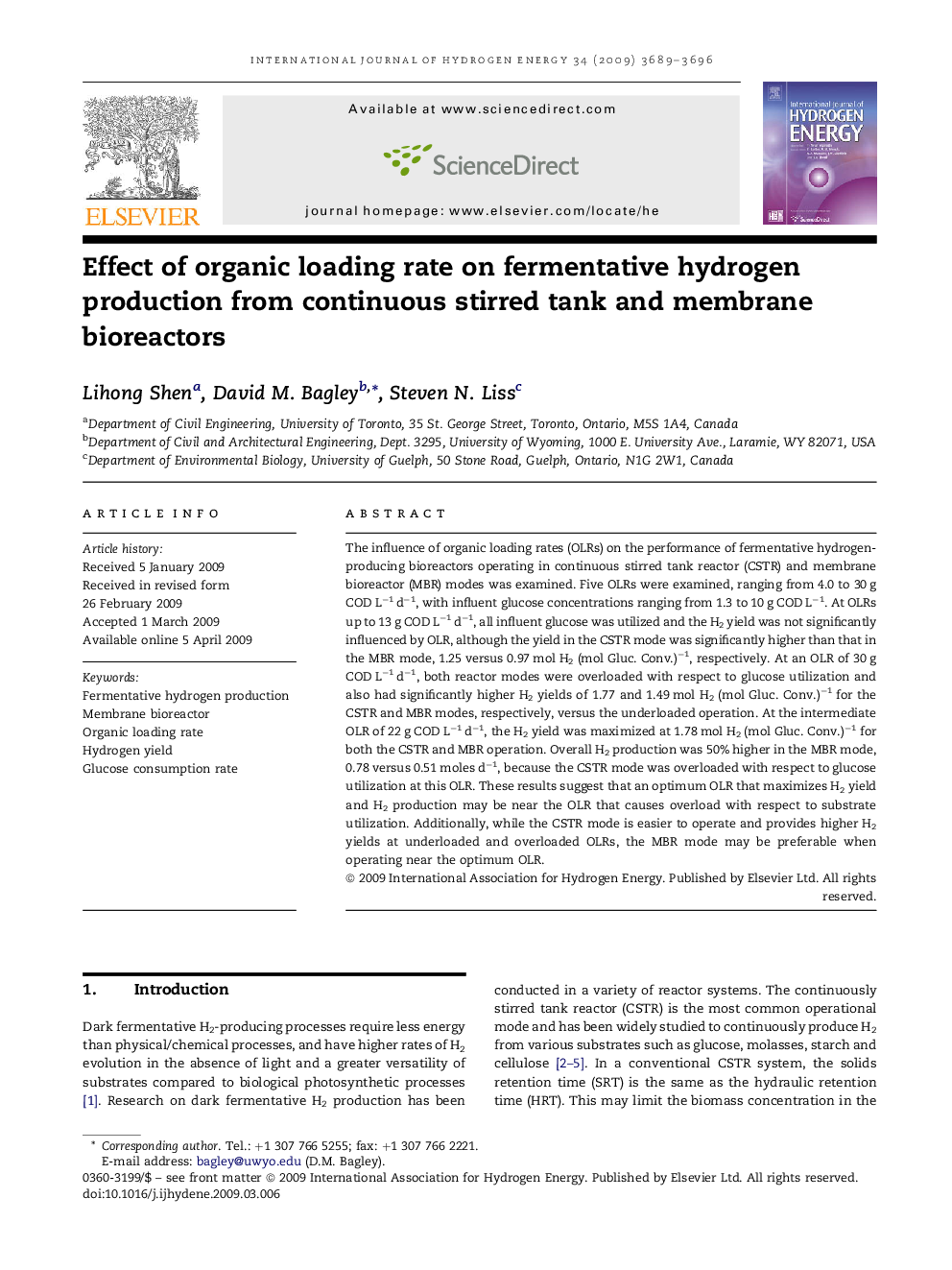| کد مقاله | کد نشریه | سال انتشار | مقاله انگلیسی | نسخه تمام متن |
|---|---|---|---|---|
| 1278999 | 1497633 | 2009 | 8 صفحه PDF | دانلود رایگان |

The influence of organic loading rates (OLRs) on the performance of fermentative hydrogen-producing bioreactors operating in continuous stirred tank reactor (CSTR) and membrane bioreactor (MBR) modes was examined. Five OLRs were examined, ranging from 4.0 to 30 g COD L−1 d−1, with influent glucose concentrations ranging from 1.3 to 10 g COD L−1. At OLRs up to 13 g COD L−1 d−1, all influent glucose was utilized and the H2 yield was not significantly influenced by OLR, although the yield in the CSTR mode was significantly higher than that in the MBR mode, 1.25 versus 0.97 mol H2 (mol Gluc. Conv.)−1, respectively. At an OLR of 30 g COD L−1 d−1, both reactor modes were overloaded with respect to glucose utilization and also had significantly higher H2 yields of 1.77 and 1.49 mol H2 (mol Gluc. Conv.)−1 for the CSTR and MBR modes, respectively, versus the underloaded operation. At the intermediate OLR of 22 g COD L−1 d−1, the H2 yield was maximized at 1.78 mol H2 (mol Gluc. Conv.)−1 for both the CSTR and MBR operation. Overall H2 production was 50% higher in the MBR mode, 0.78 versus 0.51 moles d−1, because the CSTR mode was overloaded with respect to glucose utilization at this OLR. These results suggest that an optimum OLR that maximizes H2 yield and H2 production may be near the OLR that causes overload with respect to substrate utilization. Additionally, while the CSTR mode is easier to operate and provides higher H2 yields at underloaded and overloaded OLRs, the MBR mode may be preferable when operating near the optimum OLR.
Journal: International Journal of Hydrogen Energy - Volume 34, Issue 9, May 2009, Pages 3689–3696